Instructions listed in game
1703 Parts No Cockpit Vetsion + Other Lower Part Versions
Orginial Creator Credits:
Original aircraft from GalacticaAsia's Mad Dog MD-80
Cockpit parts from realSavageMan's Murican' Mad Dog
Special thanks to JP11 for collaborating on this project and helping to retrofit much of the cockpit and improving on small visual details. Please go show him and the original creators some love.
About the McDonnell Douglas MD-80 and -83 Variant
The McDonnell Douglas MD-80 is a series of five-abreast single-aisle airliners developed by McDonnell Douglas. It was produced by the developer company until August 1997 and then by Boeing Commercial Airplanes. The origins of the MD-80 lie in 1975 testing where a standard DC-9 was fitted with improved, more efficient, higher bypass ratio JT8D-200 series turbofans. McDonnell Douglas originally proposed fitting the new engines to a development designated the DC-9-55, which would have featured two JT8D-209s and a 3.86m (12ft 8in) stretched fuselage over the 50. Instead, starting in October 1977, McDonnell Douglas developed the DC-9 Super 80 (or DC-9-80), combining the new engines with a further stretched fuselage, increased span wing and other improvements. Launched in October 1977, the Super 80 first flew on October 18 1979 and was certified on August 25, 1980. The first MD-80 delivered to enter commercial service entered with launch customer Swissair on September 13, 1980, which introduced it into service on October 10, 1980.

The MD-80 prototype, N980DC, wearing basic house colors at Long Beach Airport California (IATA: LGB, ICAO: KLGB) in June of 1983. This is the same MD-80 seen in the famous video in which the empennage separated from the aircraft during testing. The aircraft would be repaired and became a testbed for the experimental General Electric GE36 Turbofan/Turboprop hybrid

The first MD-80 to enter commercial service with launch customer Swissair, HB-INC, taxiing at Geneva Airport (IATA: GVA, ICAO: LSGG) in Switzerland on November 11th, 1994
Keeping the fuselage cross-section, longer variants are stretched by 14 ft (4.3 m) from the DC-9-50 and have a 28% larger wing. The larger variants (MD-81/82/83/88) are 148 ft (45.1 m) long to seat 155 passengers in coach and, with varying weights, can cover up to 2,550 nmi (4,720 km). The later MD-88 has a modern cockpit with EFIS displays. The MD-87 is 17 ft (5.3 m) shorter for 130 passengers in economy and has a range up to 2,900 nmi (5,400 km). The MD-83 (DC-9-83) is a longer-range version of the basic MD-81/82 with higher weights, more powerful engines, and increased fuel capacity. Compared to earlier models, the MD-83 is equipped with slightly more powerful 21,000 lbf (93 kN)-thrust Pratt and Whitney JT8D-219s as standard. She made her first flight on December 17, 1984, certified on October 17, 1985, and made her first commercial flight with launch customer Alaska Airlines on April 30, 1985.

The MD-83 prototype originally under test registration N19B having its first flight on December 17th, 1984. Seen here having been delivered to Finnair re-registered as OH-LMS at Helsinki-Vantaa Airport (IATA: HEL, ICAO: EFHK) in Finland on June 12th, 2002. There was no photo of the prototype in flight or in house colors.
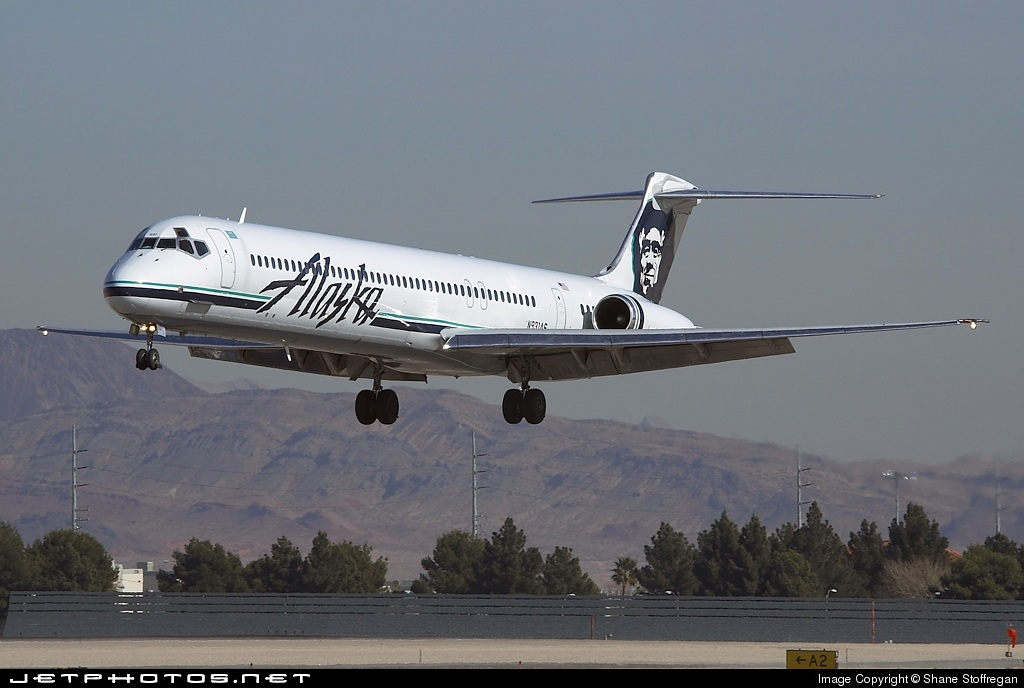
The first MD-83 to enter commercial service with launch customer Alaska Airlines, N931AS, landing at Harry Reid International Airport (IATA: LAS, ICAO: KLAS) in Nevada on January 29th, 2006. Note that this is the first MD-83 delivered as a -83. Technically, Alaska Airlines first MD-83 flight was done with N933AS, which was originally delivered June 28, 1985 certified as a -82 before being re-fitted with new P&W JT8D-219 engines and being re-certified as a -83.
The MD-80 series initially competed with the Boeing 737 Classic and then also with the Airbus A320ceo family. Its successor, introduced in 1995, the MD-90, was a further stretched version powered by IAE V2500 high-bypass turbofans, while the shorter MD-95, later known as the Boeing 717, was powered by Rolls-Royce BR715 engines. Production ended in 1999 after 1,191 MD-80s were delivered, of which 116 aircraft remain in service as of August 2022 with both freighter and passenger versions still in limited service.

An MD-82 of RED Air, HI1069, landing at Miami International Airport (IATA: MIA, ICAO: KMIA) in Florida on May 29th, 2023. One of a few passenger MD-80s still in operation with others in operation in Iran and Indonesia.

An Aeronaves TSM MD-82SF, XA-UZC, parked at Cleveland Hopkins International Airport (IATA: CLE, ICAO: KCLE) in Ohio on April 8th, 2022. One of a few MD-80 freighters still in service.

Cockpit of an Allegiant Air MD-83, N878GA, parked at Oakland International Airport, California (IATA: OAK, ICAO: KOAK, FAA LID: OAK) in February 2015. Note the MD-83 originally had a cockpit with mostly analog instruments, with many MD-80s undergoing upgrades equipping electronic screens in later years. This is one such example of a modernized MD-80 cockpit.

An example of an MD-83 with analog instruments, a Spirit Airlines MD-83, N814NK, parked at Fort Lauderdale–Hollywood International Airport (IATA: FLL, ICAO: KFLL) in Florida on November 12th, 2005.

Cabin of an American Airlines MD-83, N592AA, parked at Chicago O'Hare International Airport (IATA: ORD, ICAO) in Illinois on September 2nd, 2009
MD-83 Specs and Info
-Length: 147.83ft/45.06m
-Wingspan: 107.83ft/32.86m
-Height (Tail): 29.58ft/9.05m
-Max Range: 2430nm/4500km
-Maximum Occupancy: 172 Occupants
-Engines: Two Pratt & Whitney P&W JT8D-219 low bypass turbofans
-Cabin Layout: Five abreast
Aircraft type designators
Company Designation: DC-9-83
ICAO Code: MD83
IATA Code: M83
About Atlasjet
IATA Code: KK
ICAO Code: KKK (no not that KKK)
Callsign: ATLASGLOBAL
Primary Hub: Istanbul Airport (IATA: IST, ICAO: LTFM)
Headquarters: Istanbul, Turkey
Years Active: 2001-2020

Atlasjet's logo from 2001-2015

An Atlasjet Boeing 737-400, TC-SGD, landing at Manchester Airport (Manchester Airport (IATA: MAN, ICAO: EGCC) in England on August 21st, 2010.

An Atlasjet (Rebranded as AtlasGlobal) Airbus A330-200, TC-AGD, departing Düsseldorf International Airport (IATA: DUS, ICAO: EDDL) in Germany on October 12th, 2019. Seen wearing the airlines updated livery.
"Atlasjet Airlines A.S., which has rapidly developed and reached a leading position among the private airline companies in Turkey since the day it was founded, continues its investments and aircraft operations in order to provide better service to its passengers in parallel with its newly developed services and the technologies it has brought to our country."
-Atlasjet
AtlasGlobal, named Atlasjet until 31 March 2015, was a Turkish airline headquartered in Istanbul, which operated scheduled domestic and international passenger services as well as charter flights, mostly out of its base at Istanbul Airport. The airline was established on 14 March 2001 and started operations on June 1st 2001. Formerly known as Atlasjet International Airlines, it was set up as a subsidiary of Öger Holdings. The company had 730 employees as of 2017.
In August 2012, AtlasGlobal Airlines contracted Ryan International Airlines, a US airline, to operate religious pilgrimage flights to cities such as Medina and Tel Aviv. In January 2013 AtlasGlobal failed to fulfill the payments to Ryan International, which prompted the termination of the cooperation without advance notice. Ryan International Airlines, already in a bankruptcy reorganization process, was not able to recover from the loss and therefore faced impending financial difficulties, which led to its liquidation.
Throughout its history, the company faced multiple financial issues, especially in its later years. On November 26th 2019, AtlasGlobal announced a temporary suspension of all flights due to a restructuring of the airline. It was further announced that all ticket sales would be suspended until December 16th with flights planned to resume by December 21st. On December 16th 2019, Atlasglobal resumed scheduled flight operations, five days ahead of its previously announced return. Throughout the suspension it had maintained charter services, with two A321s serving domestic Turkish destinations as well Tehran and Baghdad. In a statement to the Sabah news agency, Atlasglobal said its revised business plan will see it focus more on charters as opposed to scheduled flights. It did not disclose which routes would be dropped as part of the adjustment.
On January 7th 2020, the airline announced it would be suspending operations again, until February 9th 2020. On January 29th 2020, was announced that AtlasGlobal returned their sole two Airbus A330-200s to their lessors. On February 12th 2020, AtlasGlobal filed for bankruptcy and halted its operations immediately
Atlasjet 4203: Recurring Fault

The involved aircraft, TC-AKM, taxiing at Atatürk Airport (IATA: ISL, ICAO: LTBA) in Turkey on November 11th 2007, roughly two weeks before the accident flight
(Obligatory not a pilot disclaimer)
Friday. November 30th, 2007. Atatürk Airport
An Atlasjet McDonnell Douglas MD-83 wet leased from World Focus Airlines, registered as TC-AKM is preparing to fly from Atatürk Airport in Istanbul to Isparta Süleyman Demirel Airport (IATA: ISE, ICAO: LTFC) in Isparta, a region in the southern part of Turkey. The aircraft is 13 years old having been originally delivered to US carrier Reno Air as N879RA on September 20th 1994 before being passed around several carriers including American Airlines before starting service in Turkey registered as TC-FBB and flying with Turkish charter airline Freebird Airlines on March 28th 2001. On May 20th 2005 she would enter service with WorldFocus registered as TC-AKM and then wetleased to Atlasjet on July 29th 2007. She is equipped with the standard two Pratt & Whitney JT8D-219 engines for the -83. In her 13 years of service she has accumulated 30130 hours of flight and 19441 cycles.
Note: A wet lease is a contract in which one airline provides an aircraft, crew, and maintenance, while the party operating the aircraft pays the lessor by the number of hours the aircraft operates. Remember this

The aircraft with its first operator Reno Air taxiing at Los Angeles International Airport (IATA: LAX, ICAO: KLAX) in California on January 18th, 1999,

The aircraft with its first Turkish carrier, Freebird Airlines, landing at Zurich Airport (IATA: ZRH, ICAO: LSZH) in Switzerland on May 1st, 2004. Guitar solo not included.
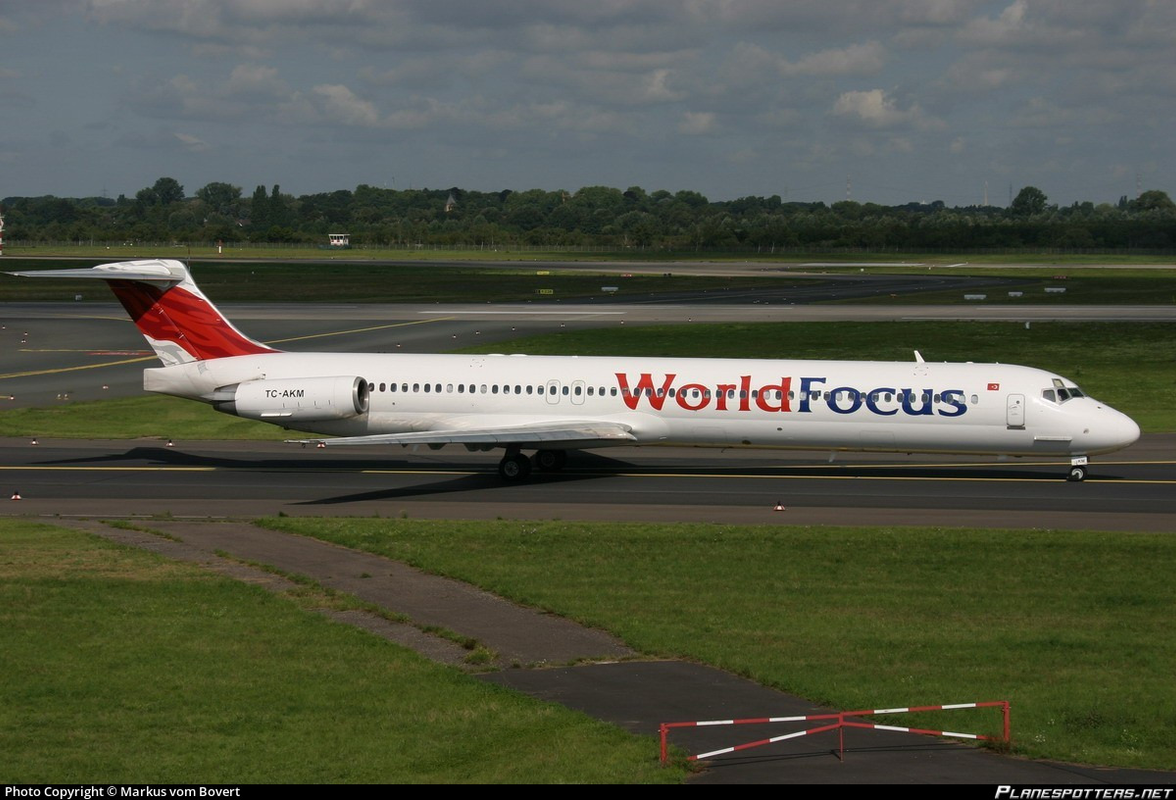
The aircraft in service with WorldFocus first wearing the TC-AKM registration taxiing at Düsseldorf Airport on August 13th 2005.
Onboard are 57 occupants with 7 crew and 50 passengers. Being a wet lease, the pilots are also from WorldFocus. In the cockpit is 48 year old Captain Muhammet Serhat Özdemir who is acting as pilot flying. Acting as pilot monitoring is First Officer Mehmet Tahir Aksoy. Mehmet was a new hire, having previously been a pilot for the Turkish Air Force and joined WorldFocus just three months prior. It is unclear what the experience of Captain Özdemir was.
Note: Before reading the next part, remember EET displays true local time on the 30th, while UTC shows time on the 29th. For the sake of continuity, consider EET as the true time for the moment.
At 00:51 EET (Eastern European Time GMT+2)/22:51 UTC, the aircraft departs from Istanbul bound for Isparta. The takeoff and climb are uneventful and the flight is short. After just 27 minutes in the air, at around 01:18 EET/23:18 UTC, Captain Özdemir tells Isparta Air Traffic Control that they are using VOR short range radio navigation to approach Isparta. Isparta is a smaller, domestic airport which at the time was not equipped with a more advanced ILS system. The approach into Isparta involves flying down the length of a valley at a heading of 225 degrees before making a left hand turn at 180 degrees followed by a right turn to ~360 degrees, completing a full turn, bringing the flight straight in at a heading of 44 degrees back down the valley. At 01:36 EET/23:36 UTC, Flight 4203 makes its last contact with Isparta ATC, telling them "Isparta tower, we are inbound" or in other words, turning in towards the runway with their distance from the airport being 11 miles/18 km. Flight 4203 should be on the ground within just several minutes, but this would be the last communication from the aircraft.

Isparta Approach Chart
The time for Flight 4203's arrival comes and goes, and the air traffic controller grows nervous. They contact the aircraft several times, asking for their current position, but are met only with an ominous silence. Isparta ATC then asks other planes in the immediate area if they can spot the missing aircraft, but because of the sheer darkness of the night combined with the mountainous terrain meant that no other aircraft could see the missing MD-80. Isparta then officially declares the aircraft as missing and search and rescue efforts are immediately carried out by the Turkish Gendarmerie General Command. The search effort is also assisted by the Turkish Air Force, sending out a helicopter equipped with a thermal camera. Despite this, the darkness severely hampers efforts. Some four hours later, at 06:00EET/04:00UTC, the helicopter finally spots the wreckage of Flight 4203 on the western side of the 6000ft/1830m tall Türbetepe hill near the town of Keçiborlu at a distance of 7.5 miles/12km from the airport. The search and rescue teams immediately converge on the site to find the aircraft split into three main pieces. There was no post crash fire but it was obvious that were no survivors to be found, having likely been killed from the force of the impact with the hill.

Wreckage of the wings and central fuselage

The vertical stabilizer, torn from the fuselage

Wreckage of the forward fuselage
In the immediate aftermath of news interviews regarding the crash, the CEO of Atlasjet, Tuncay Doganer, said the following at a press conference.
"The accident was caused by a pilot error, there was no technical fault with the aircraft."
This is an odd statement. Not only is it insulting to immediately throw the pilots under the bus, but given that the crash just occurred, there is no way of knowing what the cause was. These statements were quickly and rightfully criticized given that the situation had barely been assessed at the time. The Turkish Directorate General of Civil Aviation sent out a team of four investigators to the crash site which covered a 5000 square meter of hillside. The investigators found that the engines had been working and that the aircraft had been configured correctly for landing. The first clue was the location of the wreck itself, given that the aircraft shouldn't have been anywhere near said area. Both the flight data recorder and cockpit voice recorder were sent to the Lufthansa Technik headquarters in Germany to be downloaded and analyzed. However, the CVR had not been functioning for the previous nine days, and the FDR had only recorded the first 14 minutes of the flight before it too stopped functioning. This dealt a massive blow to the investigation, and now the investigators could only use what they had to try and piece together what had happened.
Looking over the maintenance records of the aircraft, it was found that its EGPWS system was faulty. The memory unit of the system recorded an incredible 86 faults over 235 flights. Said system had previously been installed on another Atlasjet MD-83, TC-AKN, but had been swapped out a week prior. The system which typically gives out alerts in regards to terrain failed to create the associated aural warnings. In other words, the aircraft could be flying straight into the side of the mountain and the system would never warn the pilots. It was further found that both Atlasjet and WorldFocus were aware of the fault, but intentionally left the fault undocumented in their maintenance records.
In addition, the majority of the engineers working on the plane were also aware of the issue. WorldFocus also lacked documentation on the simulator training for the pilots, with no records for training in CRM, CFIT, or GPWS. From what records that could be found, it was discovered that the captain only had 20 documented hours of simulator training, 12 less than required. The records showed even worse for the first officer, with WorldFoucs stating that he had the required 32 hours, but said training was undocumented. What was found was that the first officer only had 14 hours on the type as opposed to the 100 hours required by Turkish regulators. Neither pilot had any experience with the approach into Isparta either. In other words, both companies knowingly put a broken plane with an untrained crew into regular commercial service. Considering that Isparta is located between areas of high terrain and lacked ILS, things started to piece together.
In addition, regulations stated that if the cockpit voice recorder or flight data recorder was found to be malfunctioning or broken, then the broken data recorders would have to be fixed within three days or the plane would have to be grounded. These failures were also known and went undocumented. However, this alone does not explain the accident and how the aircraft ended up so far off course. Investigators found that the pilots were flying the approach into Isparta manually rather than using the FMS. The FMS was functional, yet it wasn't used. It is unknown why this is, but it would've made a complex approach even more difficult. Looking at the radar track of Flight 4203, it had followed the proper approach... almost.
The pilots had flown the correct approach, however, when flying southwest down the valley the pilots, unfamiliar with the airport and overloaded from flying manually, accidentally deviated their course by around 30 degrees north. Instead of flying the 225 heading, they instead flew a heading of 255 degrees, and then proceeded to turn right inbound for the airport, unaware that they were flying straight into terrain. Had the EGPWS system been functioning, the pilots would've been warned of the impending danger and the crash would never have happened. There was another small detail however. The last recorded position on the artificial horizon showed a nose high attitude. Given how the tail had separated from the fuselage, it can be implied that the pilots had noticed that something was wrong within the last moments of the flight, possibly seeing the approaching terrain being illuminated by their landing lights, and had attempted to pull up, though said effort would too late as the aircraft impacted the hillside tail first.
A final report was released a year later citing the cause of the crash to be navigational error brought on by pilot error which was worsened by malfunctioning equipment, ultimately determining it to be a case of CFIT. Unsurprisingly, a lawsuit was brought against WorldFocus in December of 2009. By that time, WorldFocus had changed its name to Ankair in February of 2008 amidst public backlash, and had its operating license revoked shortly after. As a result of the lawsuit, the owner of WorldFocus, Yavuz Çizmeci, was charged with Negligent Homicide, Allowing an Unfit Aircraft to Fly, and Leasing an Aircraft with Faulty Components. The chief executive officer and technical chief were also found guilty of Negligent Homicide on the same grounds. All three were each sentenced to 11 years and 8 months in prison, and the maintenance chief for WorldFocus received a prison sentence of 5 years and 10 months for negligent homicide. While WorldFocus crumbled and Atlasjet took a massive hit in reputation, it continued to operate until 2020 when it folded under financial pressure amidst the emergence of the COVID-19 pandemic. On the 3rd of December, 2007, the provincial council of Isparta decided to erect a mausoleum near the crash site which still stands there to this day.
Personal Notes
Greetings, it is me. If you've made it this far, congratulations. So I wanted to have this thing out like... over a month ago.
The universe really tried throwing everything it had on me at this one. Tried ripping a cockpit from another build but it didn't fit so I effectively had to start building a cockpit from scratch which I got pretty far on until it came to the little details and that combined with sudden university workload meant I lost all steam. Luckily for me, JP was willing to help finish up the cockpit. However new Gran Turismo just dropped so his attention was mostly diverted on that so I had to wait and just write the post in the meantime, which was complicated by the fact that while there is a final report, I could not find a publicly available version.
Finally got the finished build the other week and went in to make a few small adjustments... and then my entire game just broke. I have no idea why, it might've been a cloud error or it might've been an error with the update, either way, the color sliders completely broke and all colors reverted to flat and I couldn't change it. Wrote a bug report and even the devs couldn't replicate the issue so I tried one last thing before emailing them the logs which was reinstalling the game which took several attempts but did work, albeit at the cost of my sanity. Finally when I was ready to post it with the goal of posting it on my birthday. I posted an unlisted but of course, the autocredit system was broken. In addition, I wasn't happy with the screenshots so I took it down, fixed the screenshot and then tried loading the whole thing as a subassembly but that didn't fix the autocredit issue either. So then I had to go to a mod and ask them to manually go in and fix it. Finally, like a month behind schedule, I'm done. Currently sitting at my desk typing this out drained of life like... my honest reaction?

Anyways, big things planned for 10K. I doubt this will get me there but hey, its a nice thought. As always I hope you enjoy and safe flying!
-DeadlyDialga
Additional Resources
Wikipedia Page
ASN Entry
Simply Flying Article
Bureau of Aircraft Accidents Archive Entry
Aviation Herald Article
Mini Air Crash Investigation Video
News Footage of the Crash Site
2007 NBC News Article
2007 BBC News Article
Specifications
Spotlights
- Inuyasha8215 2.2 years ago
- Pan 2.2 years ago
- 929 1.5 years ago
- JP11 2.2 years ago
- ChihiroFujisaki 2.2 years ago
- TheFlightGuySP 2.2 years ago
- RepublicOfCursedPlanes 2.2 years ago
- Zerkk 2.2 years ago
General Characteristics
- Predecessor 'Mad Dog' MD-80
- Successors 11 airplane(s) +478 bonus
- Created On Windows
- Wingspan 108.0ft (32.9m)
- Length 147.7ft (45.0m)
- Height 29.9ft (9.1m)
- Empty Weight N/A
- Loaded Weight 44,391lbs (20,135kg)
Performance
- Power/Weight Ratio 0.47
- Horse Power/Weight Ratio 0.067
- Wing Loading 27.1lbs/ft2 (132.4kg/m2)
- Wing Area 1,636.8ft2 (152.1m2)
- Drag Points 9777
Parts
- Number of Parts 2097
- Control Surfaces 9
- Performance Cost 7,927

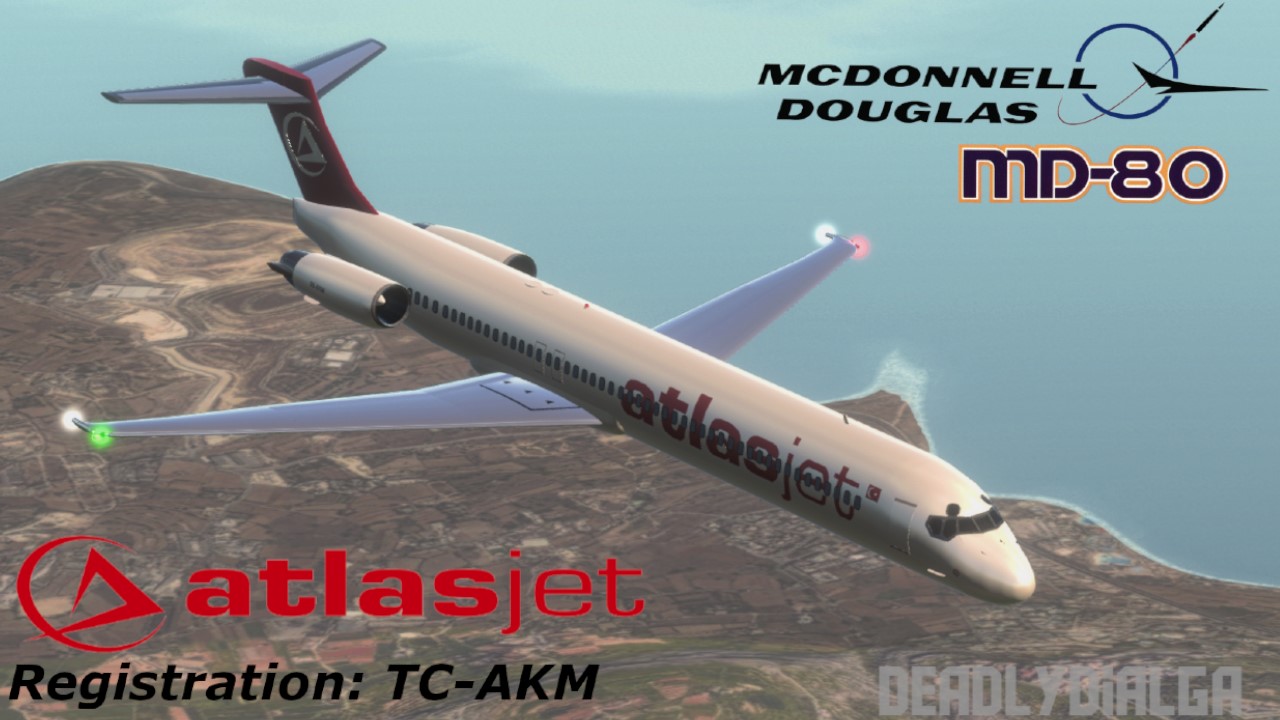
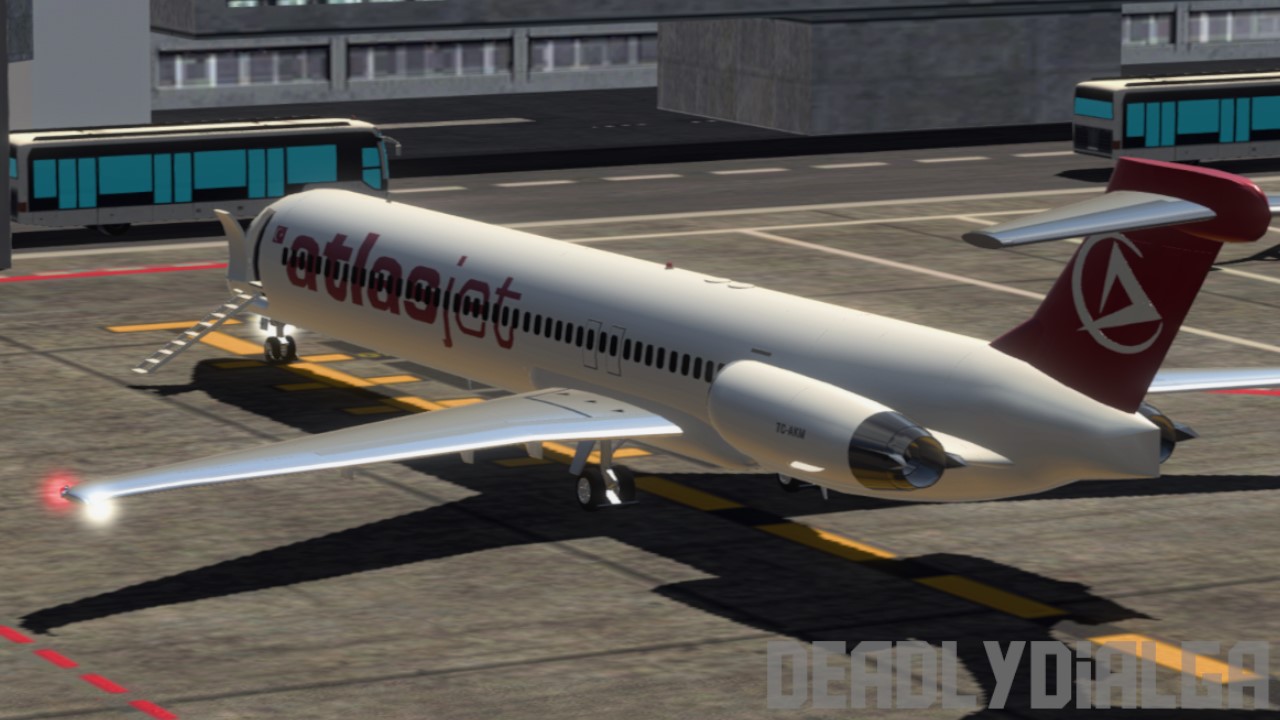
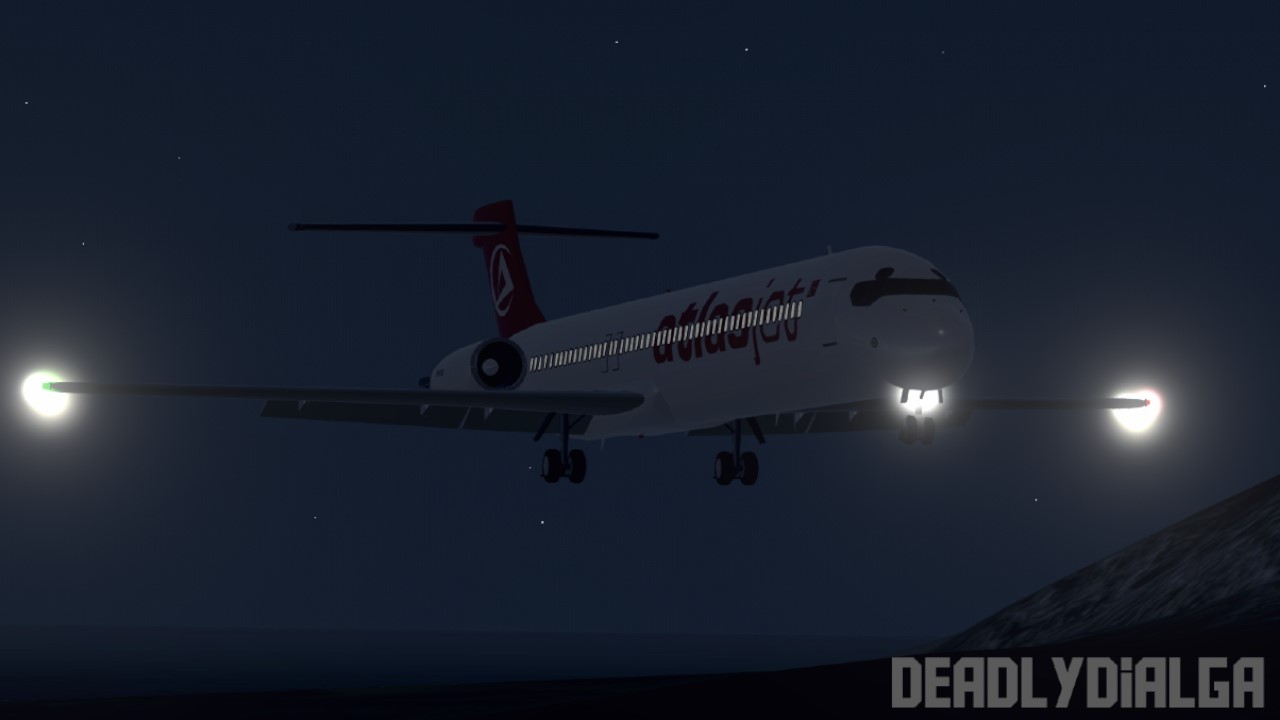
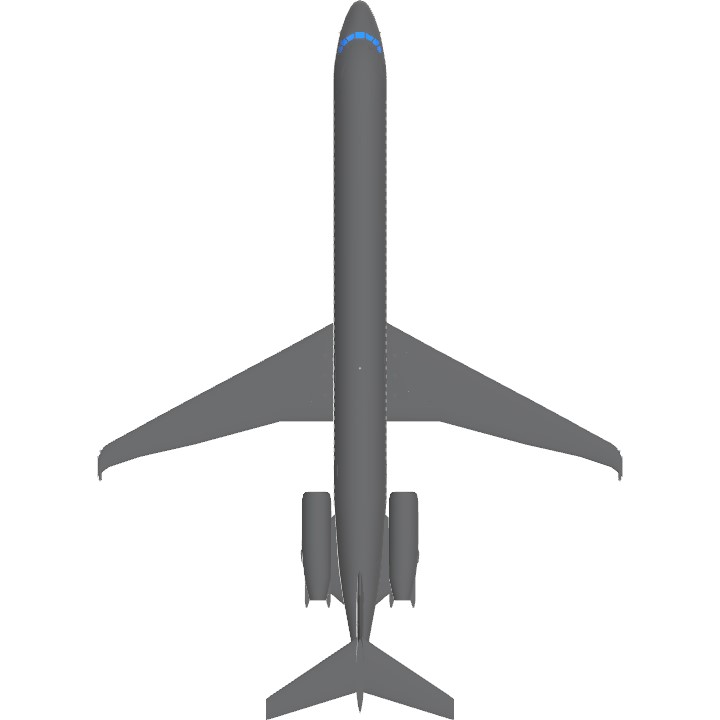
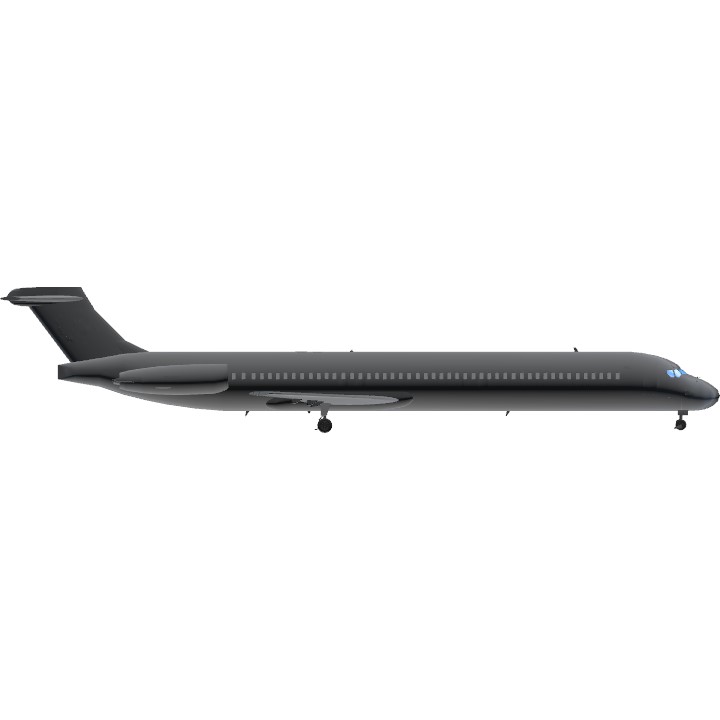
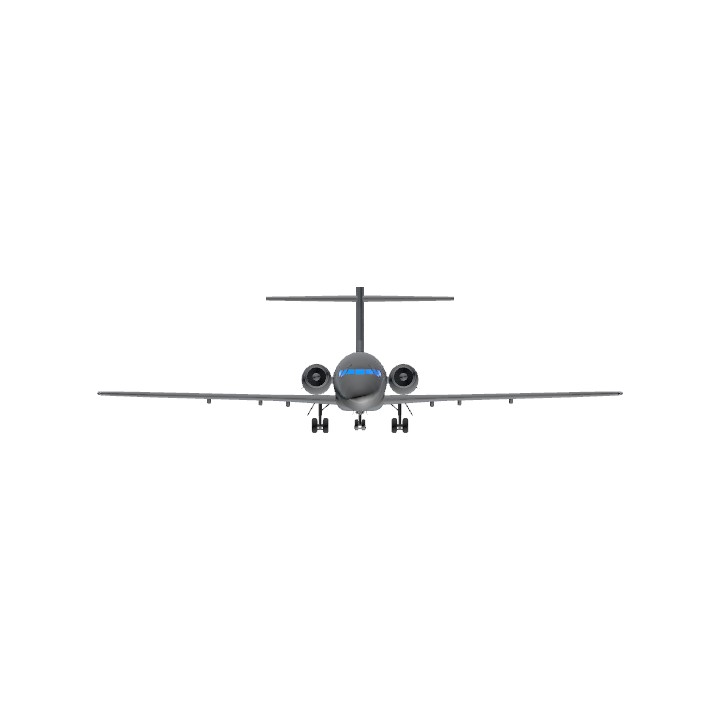
"Yo this GPWS ain't shi-"
1703 Part No Cockpit Version
Comments Link
@UnitedStatesofAmerica Hey FREEDOM!!!🦅🦅🦅🦅🦅🦅🦅🦅🦅🦅🦅🦅🦅🦅🗣🗣🗣🗣🗣🗣🗣🗣🗣🗣🗣🗣🗣🔥🔥🔥🔥🔥🔥🔥🔥🔥
@DeadlyDialga AKM 🗣🗣🗣
@UnitedStatesofAmerica
That is the registration, correct. Is there something funny I’m missing?
TC-AKM 💀
@DeadlyDialga thx and ok I’ll wait cuz I’m just asking
@Ytcaptainjeffthepilot1234
Don't worry, I'll have stuff. Just taking a short break right now to play something different. I have ideas... heck for 10k who knows... I might not even make a plane.
Also saw your video. Thank you for the ratings and kind words!
@DeadlyDialga ok
@Ytcaptainjeffthepilot1234
I have plans but it takes some time. I put university work before the silly plane building game. Hoping to branch off into some original aircraft as well at 10k.
Will you do other livers soon?
E P I K
I wasn't kidding when I said I would appreciate anyone voting for my Su-27
@DeadlyDialga fr no capp hahaha
@florky
Ah my bad then! Forgive me, I get very fed up very easily when people complain about part counts. It’s like if you can’t run it, don’t bother commenting about it.
@DeadlyDialga im joking haha, my laptop can handle the high part one.
on my phone, my phone will definitely die even if i use the low part ver
@MobileBuilder21
First non part count complaint comment from a mobile user, ayo?
Thanks! I spend way too much time on the little details…
Extraordinary 10/10
@Decembermin
This specific aircraft or just the MD-83 in general?
There's a reason I said in regards to the RED Air MD-82, "One of a few passenger MD-80s still in operation with others in operation in Iran and Indonesia."
This plane was rented by two Iranian airlines
@DeadlyDialga high number of parts (Ik there’s mobile freindly)
@florky
This post is now a reading test to see how many people are able to read that there’s multiple lower part count versions linked in both the top of the description and the comments. So far the majority of people who have commented have failed said test.
damn part count makin my damn laptop turn into an a320 on full throttle
@BeechcraftA35
What’s wrong this time?